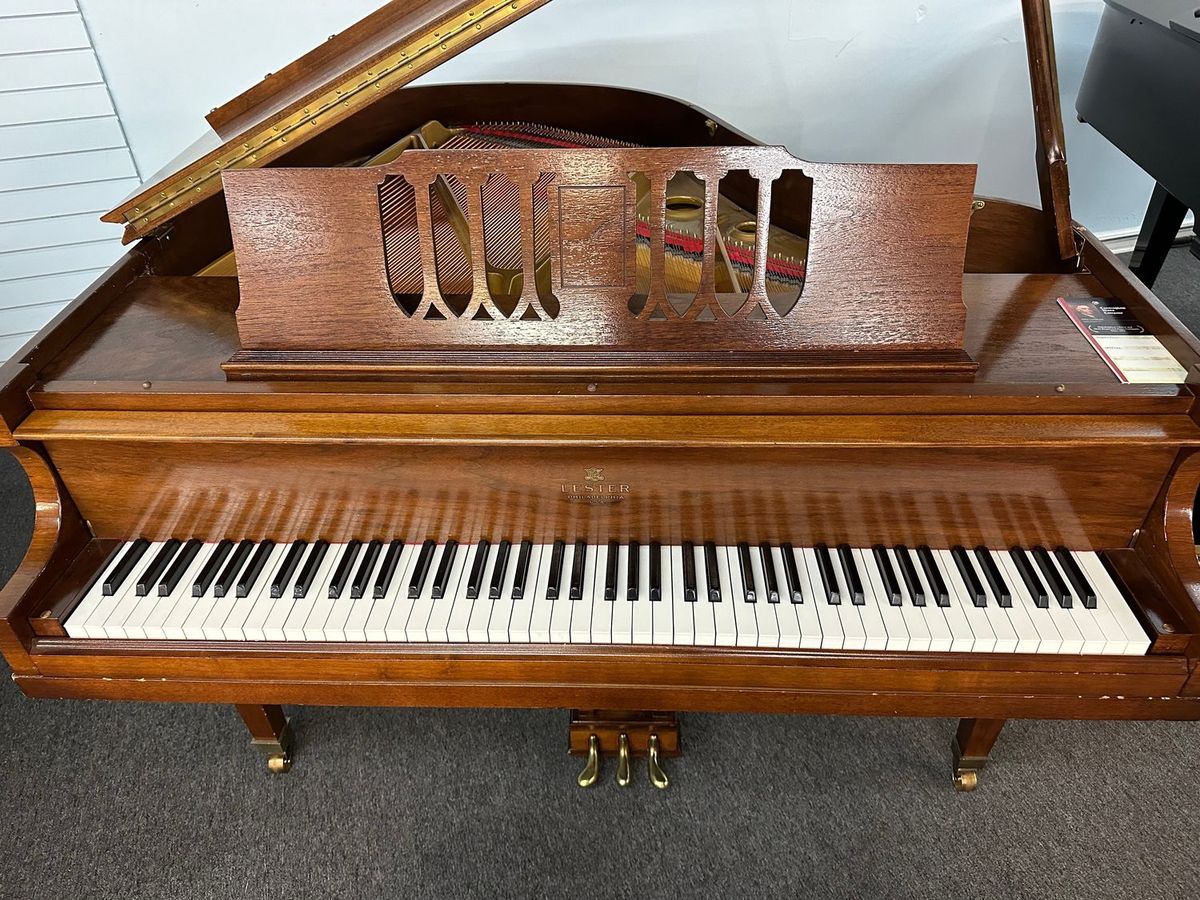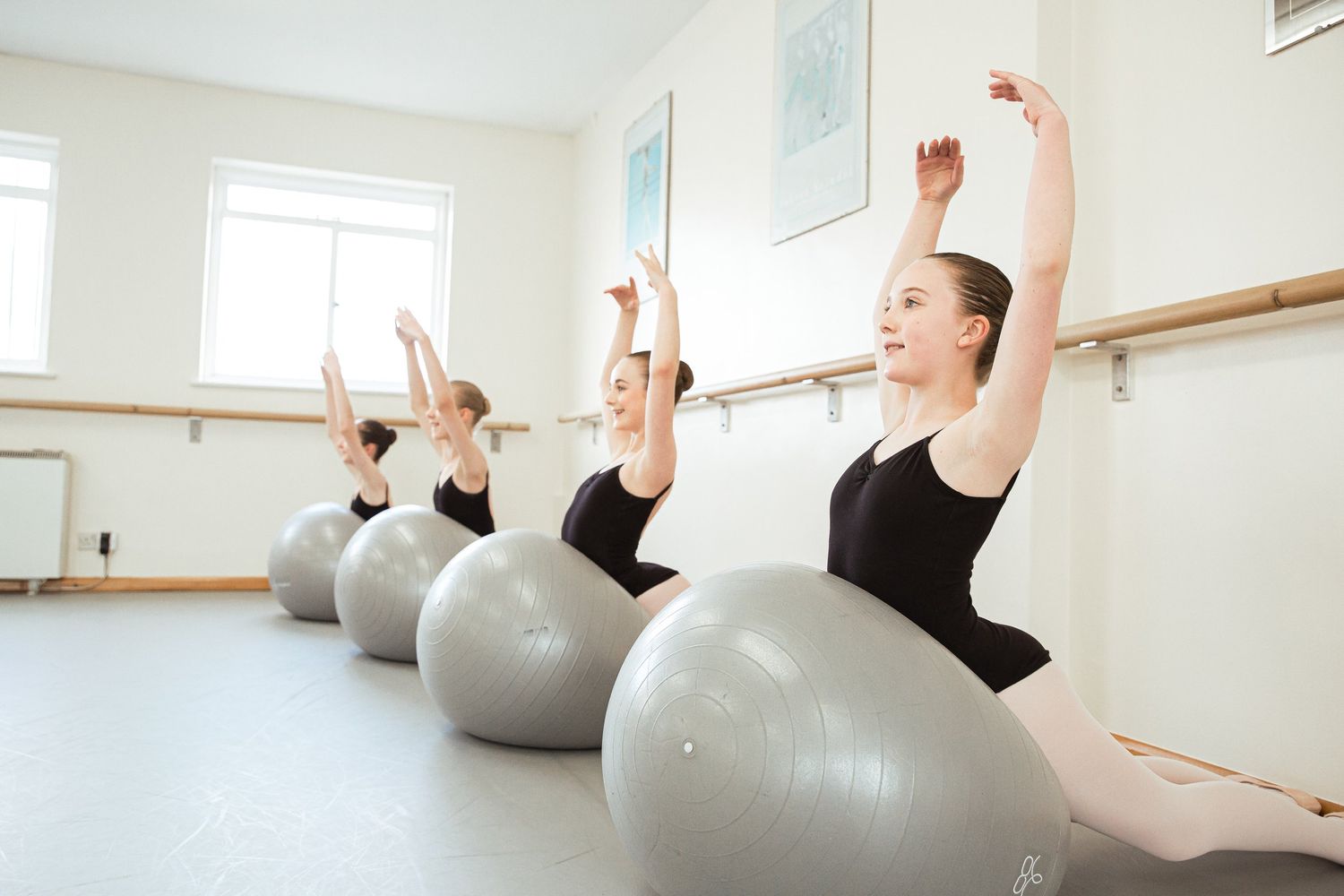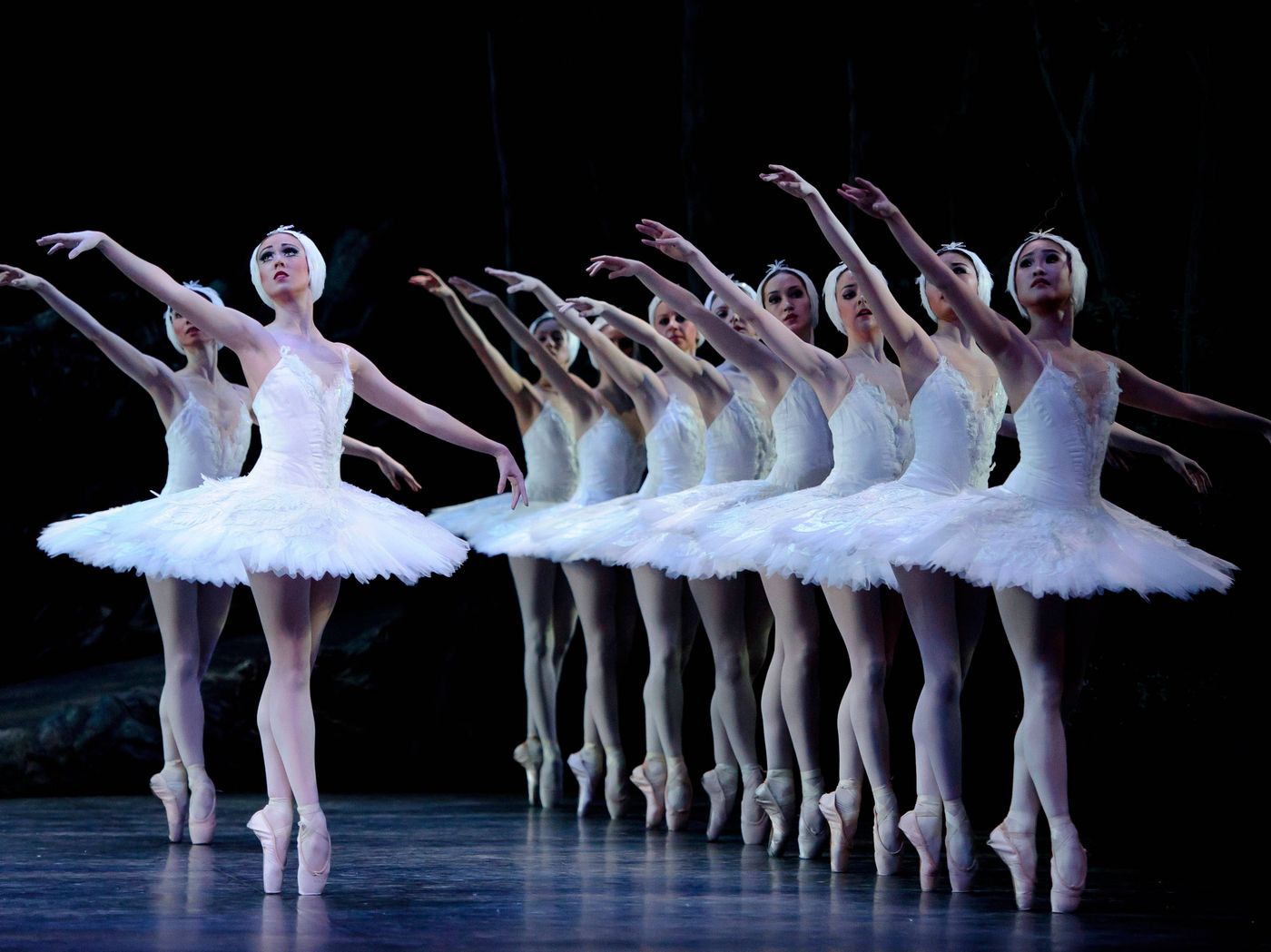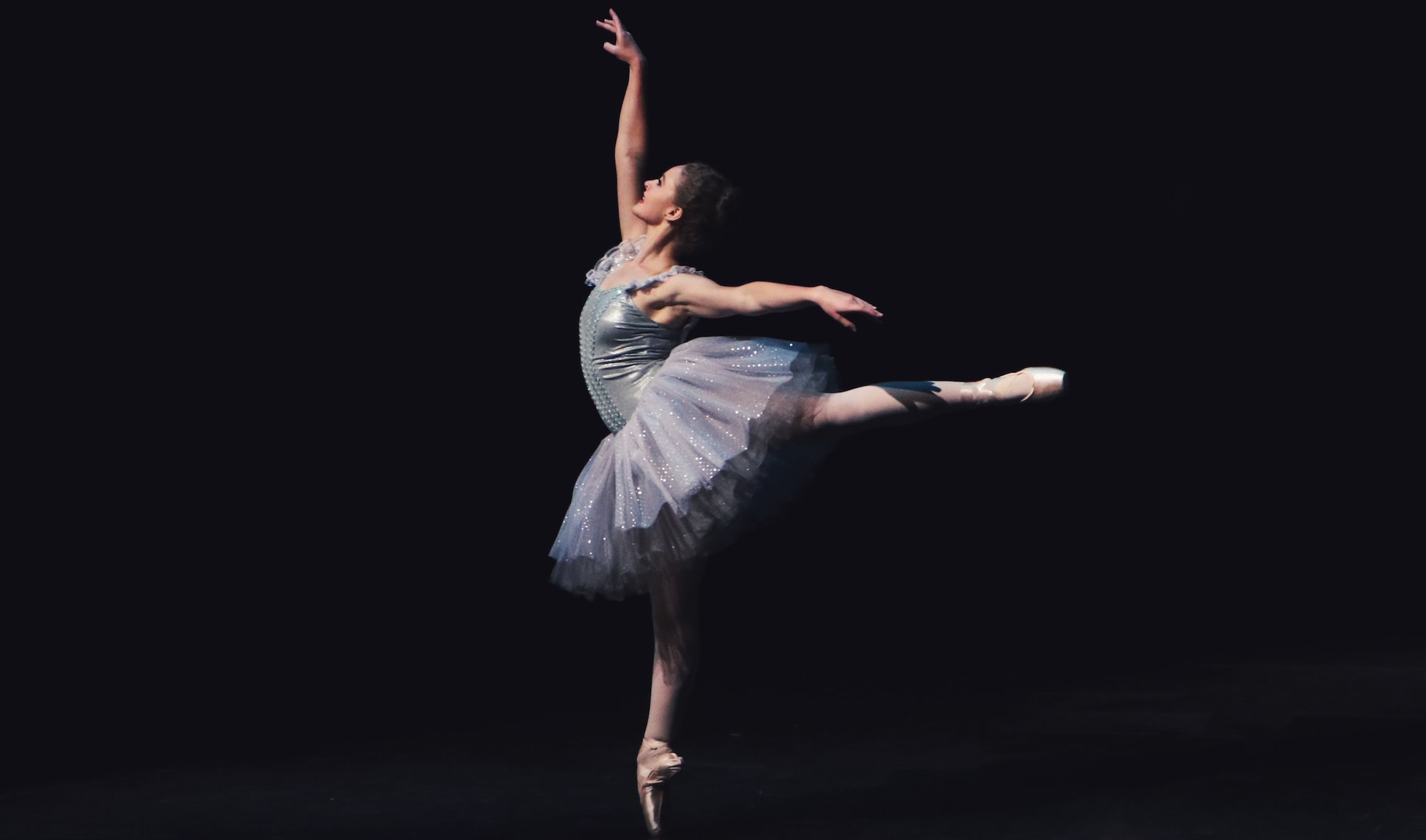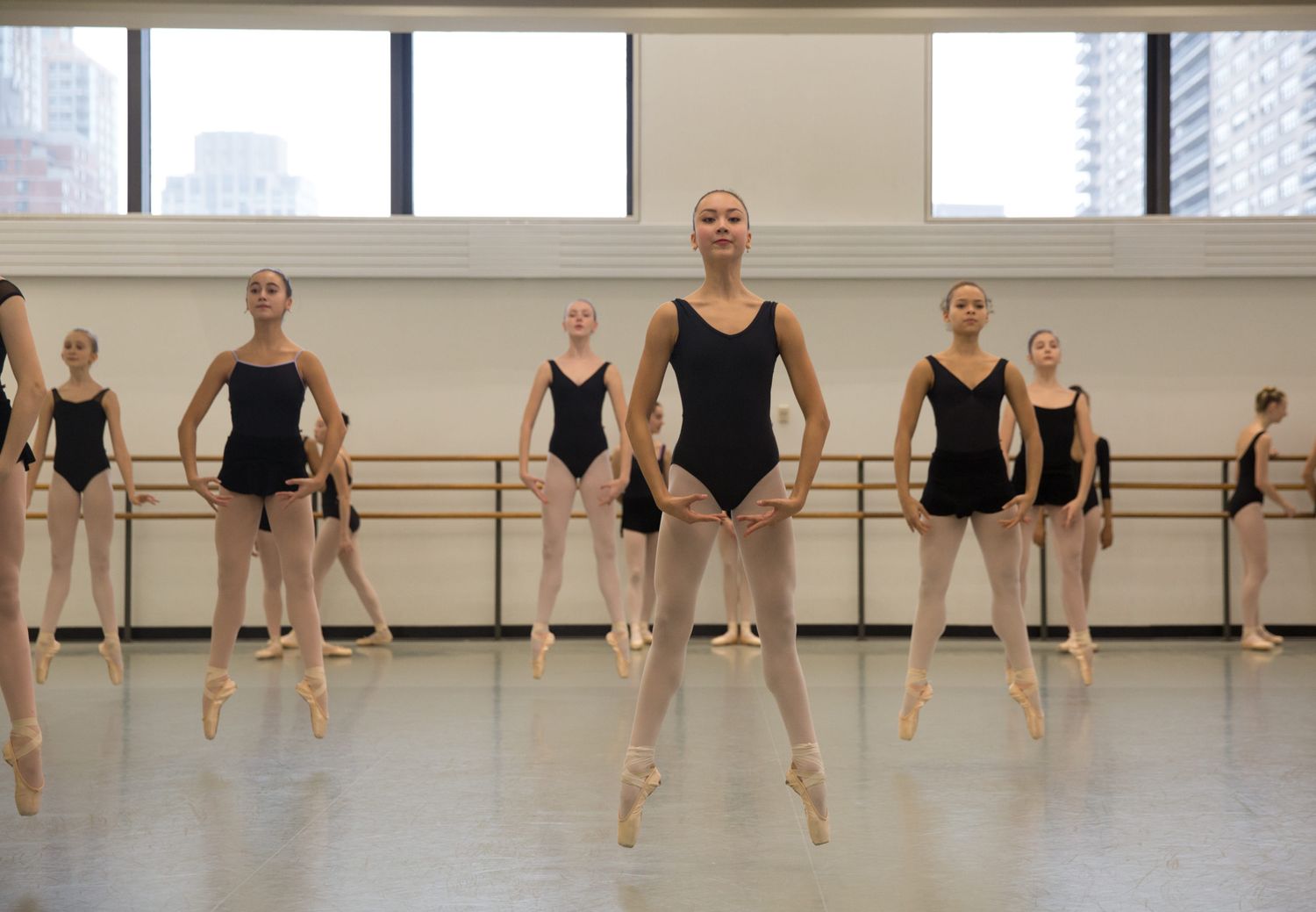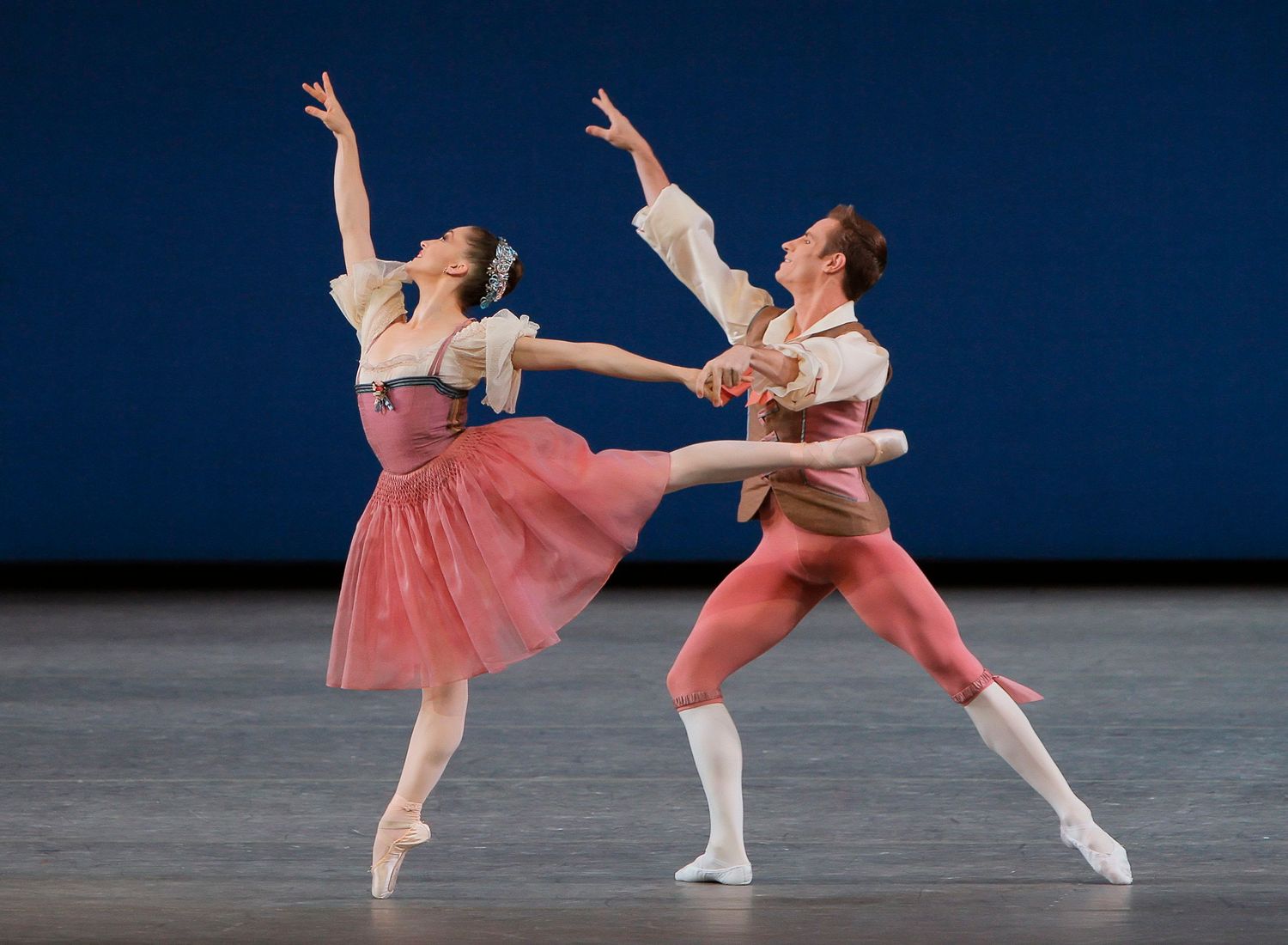Home>Events & Info>Ballet>What Are Some Ballet Moves
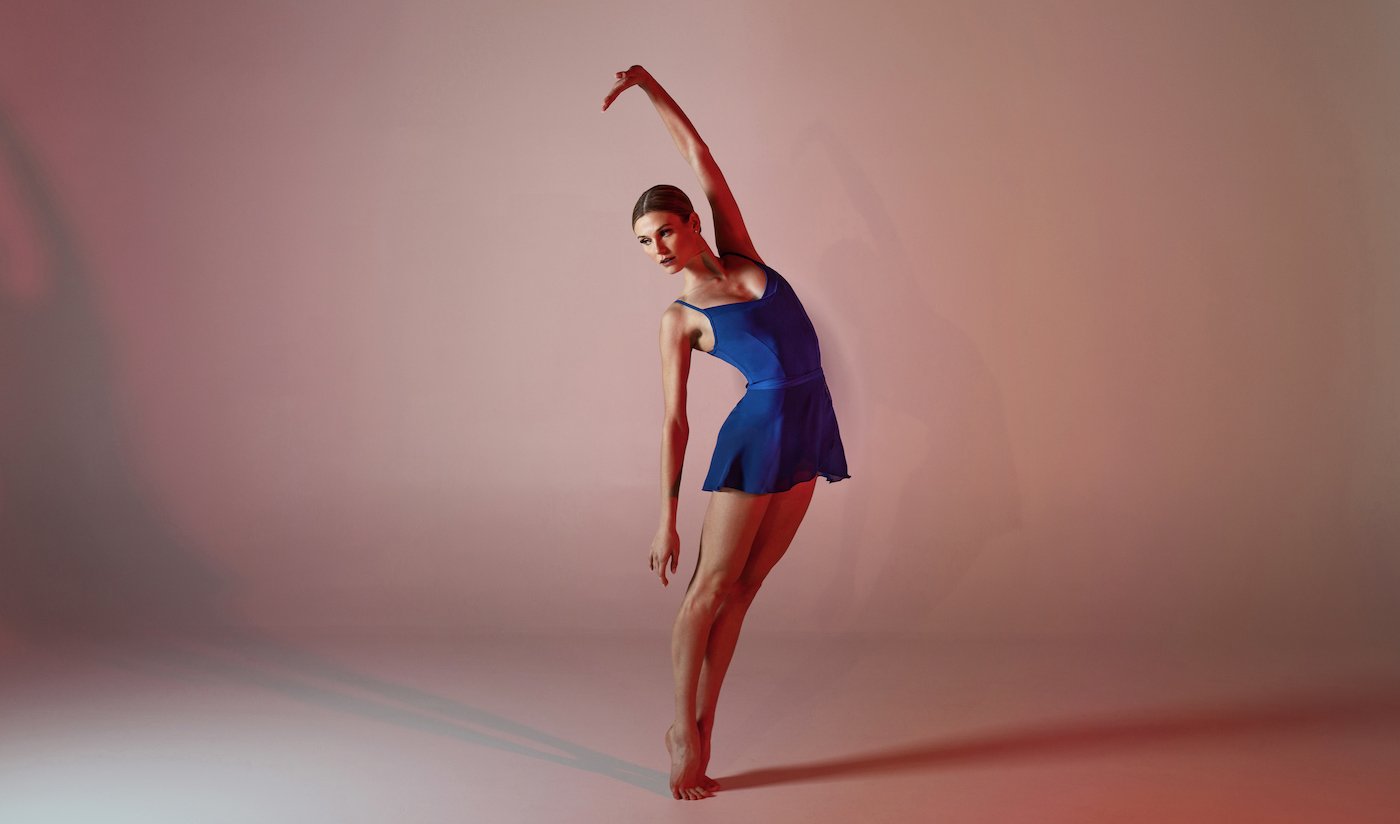

Ballet
What Are Some Ballet Moves
Modified: January 22, 2024
Discover the beauty and grace of ballet with our guide on what are some ballet moves. Explore the fundamentals and learn about various techniques and positions in this mesmerizing art form.
(Many of the links in this article redirect to a specific reviewed product. Your purchase of these products through affiliate links helps to generate commission for AudioLover.com, at no extra cost. Learn more)
Table of Contents
Introduction
Ballet is a form of dance that has captivated audiences for centuries with its grace, elegance, and precision. From the delicate movements of the arms and feet to the intricate partnering work, ballet requires strength, flexibility, and a deep understanding of technique.
In this article, we will explore some of the most fundamental ballet moves that every aspiring dancer should know. Whether you’re a ballet enthusiast or a beginner looking to learn more about this beautiful art form, this guide will provide you with an overview of the key movements and their significance.
Ballet originated in the Italian Renaissance courts of the 15th century and later gained popularity in France and Russia. It has since evolved into a highly technical and expressive dance form, renowned for its discipline and precision.
Not only is ballet a physically demanding art, but it also requires emotional expression and storytelling through movement. Dancers must convey their emotions and tell a story through fluid and controlled movements, making ballet a unique and captivating art form.
Before we dive into the specific ballet moves, it’s important to note that ballet terminology is largely in French. This is because ballet became codified in France during the 17th and 18th centuries, and much of the terminology has been passed down through generations of dancers.
Now, let’s explore some of the essential ballet moves that form the foundation of this captivating dance style.
Ballet Moves
Ballet moves are a combination of precise footwork, graceful arm movements, and fluid body positioning. These moves require strength, balance, and control to execute them with precision and grace. Let’s explore some of the most essential ballet moves:
- Plie: Derived from the French word “plier,” which means to bend, plie is a fundamental move in ballet. It involves bending and straightening the knees while keeping the body upright and the feet firmly planted on the ground. Plies are performed in various positions, such as in first, second, fourth, and fifth position, and they help in building strength and flexibility in the legs.
- Pirouette: A pirouette is a turn executed on one leg with the other leg positioned either in a retiré position or extended in various positions. The challenge lies in maintaining balance and spot (a fixed point) during the turn. Pirouettes can be performed en dehors (outward) or en dedans (inward) and are a signature move in ballet repertoire.
- Grand jete: Translated as “big throw,” the grand jete is an impressive leap that showcases the dancer’s strength, flexibility, and control. It involves a long airborne jump where one leg extends forward while the other extends backward, creating a beautiful line in the air.
- Arabesque: An arabesque is a pose performed on one leg with the other leg extended behind the body. The dancer’s body remains upright, and the arms and head are typically held in graceful positions. Arabesques can be performed at various heights and are a staple in classical ballet choreography.
- Passe: Passe is a move where the foot of the working leg is brought up to the side of the knee of the supporting leg. This position is often used as a transition or preparation for other movements in ballet, such as turns and jumps.
- Pointe: Pointe work is a hallmark of ballet. It involves dancing on the tips of the toes using specially made pointe shoes. Pointe work requires a strong technique and years of training to develop the strength and control necessary to execute the movements gracefully.
- Coupe: Coupe is a term used to describe a position where the foot is placed near the ankle of the supporting leg. It is often used as a connecting step or as a preparation for other movements in ballet.
- Balancé: Balancé is a step that involves shifting the weight from one foot to the other in a rocking motion. It is commonly used as a transition step or as part of a combination of steps in ballet choreography.
- Sauté: Sauté means “jump” in French, and it refers to various jumps performed in ballet. These jumps include small jumps, such as changements and petit allegro, as well as grand allegro jumps like the grand jete and the saut de chat.
- Fouette: The fouette is a legendary ballet move that involves a whipping motion of the working leg while the supporting leg stays stationary. It is often seen in famous variations, such as the Black Swan variation from Swan Lake.
These ballet moves are just a glimpse into the vast repertoire of steps and techniques found in classical ballet. Mastery of these moves requires dedication, practice, and a deep understanding of ballet technique. Whether you’re a dancer or a ballet enthusiast, these moves demonstrate the grace, strength, and artistry that make ballet such a captivating art form.
Plie
Derived from the French word “plier,” which means to bend, plie is one of the most basic and important ballet moves. It is a foundational movement that is often performed at the beginning of ballet classes as a warm-up exercise.
A plie is executed by bending and straightening the knees while maintaining an upright posture and keeping the feet flat on the ground. It helps to develop strength and flexibility in the legs, particularly the quadriceps and hamstrings.
There are two main types of plie: demi-plie and grand plie. In a demi-plie, the knees are bent halfway while the heels remain on the ground. The dancer then returns to a standing position with the legs straight. In a grand plie, the knees are deeply bent, and the heels may lift off the ground slightly. The dancer then rises back up to a standing position.
Plies are performed in various positions, including first position, second position, fourth position, and fifth position. The positions refer to the placement of the feet in relation to each other.
- First position: The heels are together, and the toes are turned out, creating a straight line with the legs.
- Second position: The feet are turned out, and they are approximately hip-width apart.
- Fourth position: One foot is placed in front of the other, with a slight distance between them.
- Fifth position: The heel of one foot is placed against the toe of the other foot, creating a crossed position.
Plies are not only a warm-up exercise but also a fundamental part of many ballet movements such as jumps, turns, and balances. The controlled bending and straightening of the knees in the plie provide the necessary power and stability for these movements.
Proper technique is crucial when performing plies. It is essential to keep the heels grounded, the knees aligned over the toes, and the torso lifted. The movement should flow smoothly, without any jerking or bouncing.
As dancers progress in their training, they will learn to perform plies with increasing depth and control. The muscles become stronger, allowing for deeper bends and more fluid movements.
Overall, plie is a crucial ballet move that not only warms up the body but also builds strength and prepares dancers for a wide range of ballet movements. It lays the foundation for proper form, alignment, and control in ballet technique. Whether you’re a beginner or an experienced dancer, incorporating plies into your practice is essential for the development and refinement of your ballet skills.
Pirouette
Pirouette, derived from the French word “to whirl around,” is a signature move in ballet known for its graceful and precise rotations. It involves spinning on one leg while maintaining proper alignment and control.
Executing a pirouette requires a combination of strength, balance, and technique. The dancer begins in a preparatory position, often with arms in various positions such as first position, fifth position, or en avant (forward). The working leg is either extended in a retiré position (foot placed at the knee of the supporting leg) or extended in a graceful line.
As the pirouette begins, the dancer pushes off from the supporting leg, initiating the turn. The arms and head play a crucial role in maintaining balance and control throughout the rotation. The eyes focus on a fixed point, known as the “spot,” which helps the dancer maintain orientation and minimize dizziness.
There are two primary types of pirouette: en dehors (turning outward) and en dedans (turning inward). In an en dehors pirouette, the turn is executed by spinning away from the supporting leg. The working leg is extended to the side or back. In an en dedans pirouette, the turn is executed by spinning toward the supporting leg, with the working leg extended to the front or side.
Pirouettes can be performed with various leg positions, such as attitude (working leg lifted and bent at the knee), arabesque (working leg extended behind the body), or passé (working foot placed at the knee of the supporting leg).
Mastering the pirouette requires extensive practice to develop the necessary strength, coordination, and control. Dancers must learn how to spot effectively, maintain proper alignment, engage the core for stability, and use the supporting leg as a strong base.
Advanced variations of the pirouette include multiple turns, known as double, triple, or even quadruple pirouettes, where the dancer completes two, three, or four rotations respectively. These variations require even greater control, balance, and technique.
In addition to classical ballet, pirouettes are commonly incorporated into other dance styles, such as contemporary and jazz. The mastery of pirouettes is not only aesthetically pleasing but also indicative of a dancer’s technical skill and artistry.
With dedicated practice and attention to detail, dancers can improve their pirouettes and achieve the graceful, effortless rotations that are synonymous with the beauty of ballet.
Grand jete
The grand jete, often referred to as the “big leap,” is a breathtaking and dynamic ballet move that showcases a dancer’s strength, grace, and technical skill. It is a powerful and beautiful leap that requires both height and distance.
To perform a grand jete, the dancer starts with a preparatory step, usually a deep plie, to gather momentum. The leading leg pushes off the ground while the back leg extends behind in a graceful line. The dancer maintains a straight and elongated body posture while soaring through the air.
While in the air, the legs form a split position – one leg is extended to the front, and the other leg is extended to the back. The arms play an essential role in balance and aesthetics, with one arm extended forward and the other arm extended backward, creating a sense of elongation and balance.
It is important to note that a grand jete requires substantial core strength, leg strength, and control to ensure a controlled landing. The dancer must engage the abdominal muscles to maintain stability and proper alignment throughout the leap.
The grand jete is often seen in ballet variations, solo performances, and large ensemble pieces. It is used to showcase a dancer’s technical prowess, grace, and the ability to cover long distances with poise.
Not only is the grand jete visually stunning, but it also requires a deep understanding of timing and coordination. The moment of suspension in the air allows for beautiful, flowing movements and controlled landings.
As dancers progress in their training, they may experiment with variations of the grand jete, such as performing multiple grand jetes in succession or incorporating turns and other intricate movements into the leap.
Mastering the grand jete takes time, practice, and dedication. Ballet dancers must develop the strength and flexibility in their legs, the control in their movements, and the ability to generate power and height to execute this impressive leap.
Watching a dancer gracefully execute a grand jete is a truly awe-inspiring sight, and it serves as a reminder of the athleticism, artistry, and sheer beauty that ballet embodies.
Arabesque
The arabesque is a classic and iconic ballet pose that showcases elegance, balance, and extension. It is characterized by a graceful extension of one leg to the back while the body maintains an upright posture.
To perform an arabesque, a dancer stands on one leg, known as the supporting leg, while the other leg extends back. The working leg can be lifted at different heights, depending on the style and choreography.
The arms and head also contribute to the overall beauty of the arabesque. The arms can be positioned in different ways, such as one arm extended forward while the other arm extends backward, or both arms gracefully rounded in a harmonious line. The head is typically held high, with the gaze focused in front or slightly upward.
Arabesques can be performed at various heights, such as low, mid, or high. Lower arabesques often focus on maintaining a square hip placement, while higher arabesques require more flexibility and control to achieve a beautiful line.
There are different types of arabesques in ballet, including arabesque à terre (on the ground) and arabesque en l’air (in the air), where the leg is lifted higher off the ground.
The arabesque is not only a visually pleasing pose but also a fundamental movement in ballet. It helps develop strength and flexibility in the legs, particularly the hamstrings and hip flexors. It also improves balance and core stability.
Arabesques can be incorporated into various ballet movements and variations. They often serve as transitional steps, as well as moments of stillness and balance in a dancer’s performance.
Mastering the arabesque requires a combination of proper technique, strength, and body alignment. Dancers must focus on maintaining a long, elongated line from the fingertips to the toes, while engaging the core muscles to support balance and control.
The arabesque is a fundamental pose in ballet repertoire, conveying both strength and grace. It is a visual representation of the beauty and artistry that ballet dancers strive to achieve.
Passe
The passe is a classic ballet move that involves placing the foot of the working leg near the knee of the supporting leg. It is a versatile position that serves as a transitional step, a moment of balance, and a preparation for various movements in ballet.
To execute a passe, a dancer starts by standing on one leg, known as the supporting leg. The working leg is bent at the knee, and the foot is placed near the knee of the supporting leg, forming a “passing” position.
The height at which the foot is placed can vary depending on the movement or choreography. It can be positioned on the side of the knee, slightly lower, or even higher to touch the supporting leg’s thigh.
The arms and posture also contribute to the aesthetics of the passe. The arms can be positioned in various ways, such as rounded in front or extended to the side for balance. The upper body should remain tall, maintaining a straight back and an engaged core.
The passe is commonly used as a transition step in ballet, linking one movement or pose to another. It is often performed before turns, jumps, and balances to establish stability and alignment.
One of the most significant applications of the passe is in pirouettes. The working leg is brought to a passe position before initiating the turn, providing a stable and controlled base for rotation.
The passe requires precise alignment and control. Dancers must ensure that the hips and shoulders remain level, the knee of the supporting leg is turned out, and the foot of the working leg is well-placed near the knee.
Developing strength and flexibility in the hips and thighs is essential for achieving a well-rounded passe. It allows dancers to find a comfortable and stable position while maintaining proper alignment.
As dancers progress in their training, they will learn to execute the passe at different heights, with varying leg extensions and variations. The ability to smoothly transition into and maintain a passe position is crucial for carrying out advanced combinations and variations.
The passe is a fundamental ballet move that demonstrates the dancer’s control, precision, and ability to balance. It serves as a building block for many other movements and adds elegance and grace to a dancer’s repertoire.
Pointe
Pointe work is a defining element of ballet, where dancers dance on the tips of their toes using specially designed pointe shoes. It is a technique that requires strength, control, and years of dedicated training.
Pointe work allows dancers to create an illusion of weightlessness and ethereal movement. It adds an extra level of grace, elegance, and beauty to ballet performances.
To dance en pointe, dancers must have a solid foundation in ballet technique and proper alignment. They develop the strength and stability necessary to support their body weight on the small surface area of the toes.
Starting pointe work usually begins after several years of classical ballet training, as it requires a strong technique, developed foot and ankle strength, and adequate physical maturity.
The process of progressing to pointe work involves gradually transitioning from soft ballet shoes to pointe shoes. Dancers work on strengthening their feet and ankles through specific exercises and daily pointe work training.
Pointe shoes feature a sturdy, stiff box that encases the toes, providing support and protection. The shoes also have a shank or insole that helps distribute the dancer’s weight and allows for controlled movement.
Pointe work requires great attention to alignment. Dancers must maintain a straight line from the hip to the toe, with the foot and ankle well-supported and aligned. Proper body posture, engagement of the core, and strong technique all contribute to successful and safe pointe work.
In addition to technique, artistry and expression are crucial components of dancing en pointe. Dancers must convey emotion and tell a story through their movements while maintaining the technical precision required for pointe work.
While dancing en pointe is incredibly rewarding, it also requires a significant amount of discipline and dedication. Dancers must take proper care of their feet, diligently practice strengthening exercises, and listen to their bodies to prevent injuries.
Pointe work opens up a whole new world of possibilities for dancers. It allows them to perform iconic variations, execute impressive turning sequences, and effortlessly glide across the stage in a captivating display of artistry and skill.
Whether performing iconic classics or exploring contemporary choreography, pointe work adds a touch of magic to ballet and continues to captivate audiences around the world.
Coupe
Coupe is a fundamental ballet move that involves placing the working foot near the ankle of the supporting leg. It is a versatile and commonly used position in ballet, serving as a transitional step and a preparatory movement for various ballet sequences.
To execute a coupe, a dancer begins by standing on one leg, known as the supporting leg. The working foot is brought up and positioned near the ankle of the supporting leg, with the toes pointed. The working foot can be placed on the inside or outside of the ankle, depending on the specific movement or choreography.
While the coupe itself is a relatively simple position, it requires proper alignment and coordination. The hips and shoulders should remain level, and the core should be engaged to maintain stability and balance.
Coupe is often used as a connecting step, allowing for smooth transitions between movements. It is commonly employed in ballet combinations, where dancers quickly shift from one pose or step to another.
As a preparatory movement, the coupe provides a strong foundation for various ballet techniques. It is commonly used before executing steps such as pirouettes, jumps, and balances, as it helps dancers find stability and create a solid base.
Throughout a ballet class or routine, dancers may perform coups in different directions, such as front, side, or back, depending on the demands of the choreography. Coups can also be performed with different arm positions, adding elegance and fluidity to the overall movement.
Developing strength and flexibility in the feet and ankles is essential for executing a clean and precise coupe. Proper technique ensures that the feet and legs work together harmoniously, allowing dancers to execute movements seamlessly.
Mastering the coupe is a vital component of a ballet dancer’s training. It promotes the development of balance, coordination, and control. As dancers progress in their training, they refine their ability to execute the coupe quickly and effortlessly.
While the coupe may seem like a simple movement, its versatility and importance in ballet cannot be overstated. It serves as a building block for more advanced steps and sequences, offering dancers a solid foundation upon which they can continue to develop their technique and artistry.
Balancé
Balancé is a graceful and fluid ballet move that is characterized by a rocking or swaying motion. It is a traveling step that combines shifts of weight and constant movement, creating a sense of rhythm and flow.
To perform a balancé, a dancer begins in a demi-plié with one foot in front of the other. The weight is then shifted to the back foot as the front foot moves to the side. The weight is then shifted back to the front foot as the back foot moves to the side, creating a rocking motion.
As the dancer continues the balancé, the arms can move in harmony with the feet, adding elegance and grace to the step. The arms can be extended to the side or curved in front of the body, further enhancing the fluidity of the movement.
The balancé is often used as a transitional step or as part of a combination of movements in ballet choreography. It allows for seamless transitions between different directions or poses while maintaining a continuous flow of movement.
The key to executing a balancé is maintaining a sense of balance and control. The core should be engaged, the spine aligned, and the weight evenly distributed between the feet. The movement should feel smooth and effortless, as if the dancer is effortlessly gliding across the stage.
Balancés can be performed in various tempos and rhythms, allowing dancers to showcase their musicality and interpretation of the accompanying music. They are often seen in lyrical or adagio sequences, adding a sense of gracefulness and continuous motion to the performance.
While seemingly simple, perfecting the balancé requires practice, coordination, and an understanding of weight transfer. Dancers must develop a keen sense of balance and an ability to maintain control while moving rhythmically.
The balancé is a versatile step that can be adapted to different styles of ballet and utilized in a variety of choreographic contexts. Its elegance, fluidity, and rhythmic nature make it a captivating and beautiful movement to watch.
Whether gracefully gliding across the stage or seamlessly transitioning between poses, the balancé showcases the artistry and technical precision that makes ballet such a mesmerizing and expressive dance form.
Sauté
Sauté, derived from the French word meaning “to jump,” is a lively and dynamic ballet move that involves leaping off the ground. It is a fundamental jumping step that adds excitement, energy, and elevation to ballet performances.
To execute a sauté, a dancer starts in a preparatory position, usually a demi-plié, to gather momentum. The dancer then pushes off the ground with both legs, propelling themselves into the air. The legs are extended in a split position, with one leg in front and the other leg in the back, creating a beautiful and expansive line.
As the dancer jumps, the arms can be positioned in various ways, such as rounded in front or extended to the sides, enhancing the overall aesthetic of the leap. The upper body remains upright and engaged, contributing to the sense of control and balance.
Sautés can be performed in various directions, such as straight forward, sideways, or in a turning motion. They can also incorporate different leg positions, such as grand jeté (large split leap) or petit sauté (small jump), depending on the choreography and style of the ballet piece.
Timing and coordination are crucial in executing sautés. Dancers must synchronize the push off the ground, the height and extension of the legs, and the landing to create a seamless and controlled movement. Proper technique and body alignment ensure efficient use of energy and prevent injury.
Sautés are often incorporated into ballet combinations, adding excitement and variety to the choreography. They can be executed in quick succession, known as petit allegro, or as individual jumps with moments of suspension in the air, known as grand allegro.
Developing the necessary strength and power for sautés requires dedicated training. Dancers must develop strong leg muscles, particularly the quadriceps and calves, to generate height and control in their jumps. The core must also be engaged to maintain stability and balance throughout the leap.
The ability to execute sautés with grace, precision, and ease is a testament to a dancer’s technical proficiency and athleticism. It brings a sense of vibrancy and exhilaration to ballet performances, captivating the audience and adding an element of excitement to the stage.
Whether elegantly soaring through the air or swiftly covering a vast distance in a split second, sautés showcase the agility, strength, and artistry of ballet dancers, making them an essential and thrilling element of the ballet repertoire.
Fouetté
The fouetté, meaning “whipped” in French, is a captivating ballet move that is known for its grace, speed, and precise footwork. It is a turning step, typically performed by female dancers, that combines multiple rotations with a whipping motion of the working leg.
To execute a fouetté, the dancer begins by standing on one leg, called the supporting leg, while the other leg, known as the working leg, is extended in front. The working leg is initially positioned in a passé, where the foot is placed near the supporting leg’s knee.
As the turn begins, the working leg is quickly extended and then whipped around to the side, creating a rapid whipping motion. The dancer simultaneously spins on the supporting leg, executing a series of turns with each consecutive fouetté.
The arms play an essential role in the fouetté, assisting with balance and coordination. They can be held in various positions, such as rounded in front or stretched to the sides, enhancing the visual appeal of the turn.
While the fouetté itself is impressive, one of its iconic variations is the fouetté en tournant, commonly seen in classical ballets such as Swan Lake. In this version, the dancer executes a series of fouettés while continuously turning in a pirouette motion.
Mastering the fouetté requires a combination of technique, strength, and precision. Dancers must maintain a strong core, engage the supporting leg muscles, and generate momentum through the quick extension and whip of the working leg.
The fouetté is known for its difficulty and level of skill required. Dancers must have a solid foundation in turns and spotting technique to maintain balance and avoid dizziness during multiple rotations.
The fouetté is not only a technical feat but also a visually stunning move that showcases a dancer’s artistry and control. It represents the culmination of years of training and dedication, as well as the ability to infuse the turn with grace and precision.
Watching a dancer execute a series of fouettés is a breathtaking experience, as the rapid spins, precise footwork, and dynamic movements create a mesmerizing display of skill and athleticism. It has become an iconic and beloved feature of ballet performances around the world.
Whether performing a fouetté en tournant or executing a series of fouettés as a standalone turn, this captivating move adds excitement, flair, and a touch of virtuosity to the art of ballet.
Conclusion
Ballet moves encompass a wide range of techniques, from the graceful and controlled plié to the dynamic and precise fouetté. Each move serves a unique purpose, contributing to the beauty and artistry of ballet.
Throughout this article, we have explored ten essential ballet moves, including plié, pirouette, grand jete, arabesque, passe, pointe, coupe, balancé, sauté, and fouetté. These moves showcase the strength, flexibility, precision, and fluidity required of ballet dancers.
While these ten moves provide a foundation, it is important to remember that ballet is a rich and diverse art form with countless other movements and variations. From delicate gestures of the hands to intricate partnering work, ballet continues to evolve and captivate audiences worldwide.
Whether you are a ballet enthusiast or a dancer-in-training, understanding and mastering these essential ballet moves is key to developing a solid technique and expressing oneself through the language of dance.
Remember, ballet is not just about the physicality and technical proficiency; it is also about storytelling, emotion, and artistic expression. The execution of these moves should merge technique with artistry to create a truly captivating performance.
So, whether you find inspiration in the grace of an arabesque, the power of a grand jete, or the elegance of a pirouette, let these ballet moves ignite your passion for this timeless art form.
Continue to explore, learn, and refine your ballet skills, and let the beauty and magic of ballet transport you to a world of artistry, expression, and endless possibilities.
Remember, ballet is not just a dance, but a way of life, and with dedication and discipline, you can experience the joy and fulfillment that ballet brings. So, take the leap, spread your wings, and let ballet be the language through which you express yourself.

